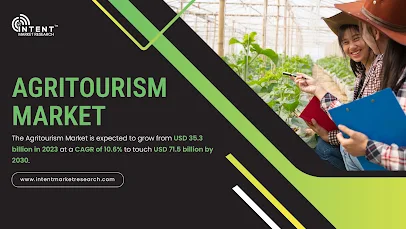The Seeds Market plays a critical role in modern agriculture, serving as the foundation for global food production. As demand for high-yielding and resilient crops increases, the seed industry is witnessing significant innovation and expansion. The introduction of genetically modified (GM) seeds, hybrid varieties, and advanced biotechnology solutions is transforming the agricultural landscape, ensuring better productivity and sustainability.
According to Intent Market Research, the Seeds Market was valued at USD 55.9 billion in 2023 and is projected to surpass USD 88.1 billion by 2030, growing at a CAGR of 6.7% during the forecast period (2024-2030). The rapid growth in this sector is driven by technological advancements, rising food security concerns, and increased investment in sustainable agriculture.
Access Full Report @ https://intentmarketresearch.com/latest-reports/seeds-market-3632
Factors Driving Market Growth
- Rising Global Food Demand
With the world's population expected to reach nearly 10 billion by 2050, food security has become a top priority. Farmers are relying on high-yielding and disease-resistant seed varietiesto maximize output and meet the growing demand for staple crops such as rice, wheat, corn, and soybeans. - Technological Advancements in Seed Development
The adoption of biotechnology, CRISPR gene-editing, and hybridization techniqueshas revolutionized seed development. Genetically modified (GM) seeds offer improved resistance to pests, diseases, and environmental stresses such as drought and extreme temperatures, enhancing overall agricultural productivity. - Expansion of Organic and Non-GMO Seeds Market
As consumers become more conscious of the food they consume, the demand for organic and non-GMO seeds is rising.Organic farming is gaining traction worldwide, leading to increased adoption of naturally bred seeds without chemical modifications. - Government Initiatives and Agricultural Investments
Various countries are introducing supportive policies and providing subsidies for sustainable agriculture and seed development.Research institutions and private companies are also investing in R&D to create climate-resilient seed varieties that can thrive in challenging environments. - Climate Change and Need for Resilient Crops
Unpredictable weather patterns, rising temperatures, and soil degradation are major challenges for farmers. Drought-tolerant and pest-resistant seed varietiesare being developed to withstand harsh environmental conditions, ensuring stable crop yields.
Market Segmentation and Regional Insights
The seeds market is segmented based on:
- Type: Hybrid seeds, genetically modified (GM) seeds, organic seeds, and conventional seeds.
- Crop Type: Cereals & grains (corn, wheat, rice), oilseeds (soybean, sunflower), fruits & vegetables (tomatoes, peppers, melons), and others.
- Trait: Herbicide-tolerant, insect-resistant, and multi-trait seeds.
Regional Market Trends
- North America and Europe lead the global seeds market due to high adoption of GM crops, advanced R&D, and strong agricultural policies.
- Asia-Pacific is experiencing rapid growth, driven by increasing food demand, government support for high-yield crops, and expanding agribusiness investments in countries like China, India, and Indonesia.
- Latin America and Africa are emerging markets, with a strong focus on enhancing agricultural productivity and adopting genetically improved seeds.
Download Sample Report @ https://intentmarketresearch.com/request-sample/seeds-market-3632
Challenges Facing the Seeds Market
Despite its growth, the seeds market faces several challenges, including:
- Regulatory Restrictions: Some regions impose strict regulations on genetically modified seeds, affecting market expansion.
- High Costs of Advanced Seeds: The cost of hybrid and GM seeds is relatively high, limiting their adoption among small-scale farmers.
- Environmental Concerns: Continuous use of modified seeds raises concerns about biodiversity loss and dependency on chemical fertilizers and pesticides.
Future Outlook and Opportunities
The seeds market is expected to continue its growth trajectory, fueled by:
- Increasing investment in smart agriculture and precision farming.
- Advancements in seed breeding technologies for climate-resilient crops.
- Expansion of organic and sustainable farming practices.
- Growth in emerging economies with rising agricultural productivity needs.
By 2030, innovations in biotechnology, AI-driven farming, and sustainable agriculture will further transform the seeds industry, making it more resilient, productive, and environmentally friendly.
About Us
Intent Market Research (IMR) is dedicated to delivering distinctive market insights, focusing on the sustainable and inclusive growth of our clients. We provide in-depth market research reports and consulting services, empowering businesses to make informed, data-driven decisions.
Our market intelligence reports are grounded in factual and relevant insights across various industries, including chemicals & materials, healthcare, food & beverage, automotive & transportation, energy & power, packaging, industrial equipment, building & construction, aerospace & defense, and semiconductor & electronics, among others.
We adopt a highly collaborative approach, partnering closely with clients to drive transformative changes that benefit all stakeholders. With a strong commitment to innovation, we aim to help businesses expand, build sustainable advantages, and create meaningful, positive impacts.
Contact Us
sales@intentmarketresearch.com
US: +1 463-583-2713











